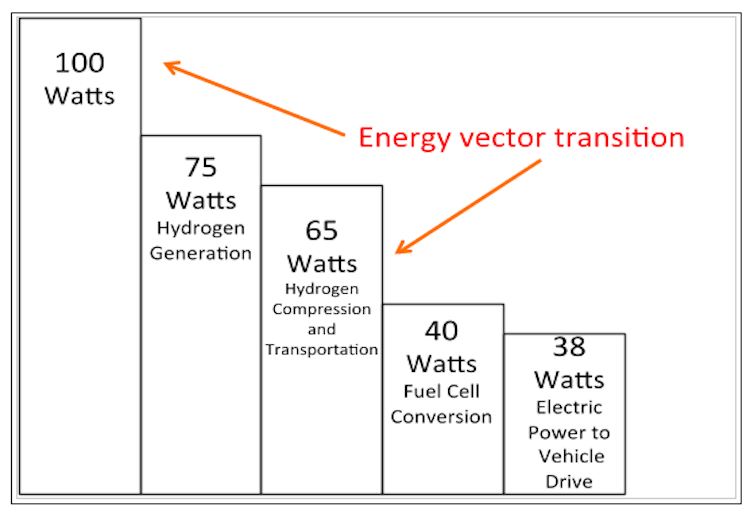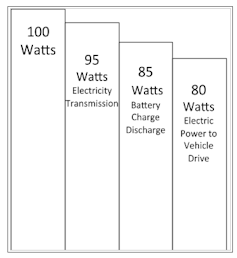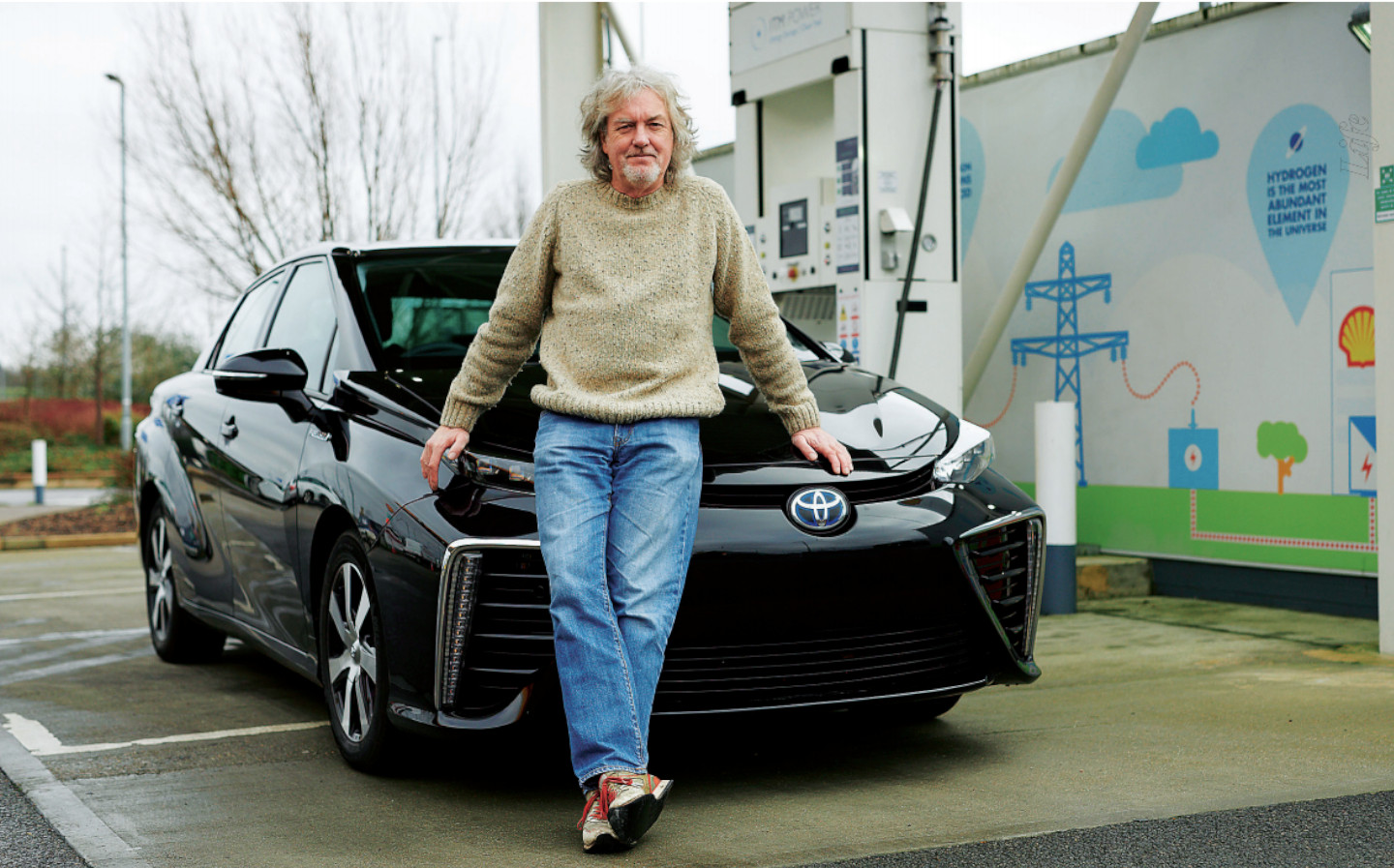D
Departed
Guest
Heliogen and Bloom Energy Lead the Way to Produce Low-Cost, Green Hydrogen Following Successful Demonstration
2021-11-16 08:00 ET - News Release
Longer run time and steam generation through concentrated solar, combined with high-temperature electrolysis, unlock low-cost hydrogen production

Company Website: https://heliogen.com/
PASADENA, Calif. & SAN JOSE, Calif. -- (Business Wire)
Heliogen, Inc. and Bloom Energy Corporation (NYSE: BE) today announced the generation of green hydrogen by integrating the companies’ technologies – Heliogen’s concentrated solar energy system and the Bloom Electrolyzer. The successful demonstration in Lancaster, California produced hydrogen and showcased the many benefits of combining the companies’ complementary technologies to achieve low-cost green hydrogen production.
This press release features multimedia. View the full release here: https://www.businesswire.com/news/home/20211116005579/en/
Heliogen’s AI-enabled concentrated solar energy system is designed to create carbon-free steam, electricity, and heat from abundant and renewable sunlight. When combined with Bloom’s proprietary solid oxide, high-temperature electrolyzer, hydrogen can be produced 45 percent more efficiently than low-temperature PEM and alkaline electrolyzers. Electricity accounts for nearly 80 percent of the cost of hydrogen from electrolysis. By using less electricity, hydrogen production is more economical and accelerates adoption. In addition, the ability to use heat, which is a much lower cost source of energy than electricity, further improves the economics of green hydrogen production.
Heliogen’s concentrated solar technology is different than traditional photovoltaic solar; it facilitates hydrogen generation for longer periods of time, operating near 24/7 by storing the solar energy, resulting in more compact and lower cost production. The extended operating time of Heliogen’s technology and Bloom Energy’s ability to efficiently utilize heat is designed to reduce the cost of green hydrogen production compared to competing solutions.
Hydrogen use is forecast to grow from 115 million metric tonnes currently to 500-800 million metric tonnes a year by 2050, accounting for 15 to 20 percent of total global energy demand. Hydrogen projects already announced represent over $300 billion in spending across the value chain, and McKinsey & Company analysts expect at least $150 billion of that spend to be related to hydrogen production, which Heliogen and Bloom Energy are addressing through their collaboration.
The successful demonstration is an important step forward towards the goal of replacing fossil-derived fuels with green hydrogen in commercial and industrial applications. Responsible for more than one-third of the world’s energy consumption and a quarter of global CO2 emissions, industrial companies are particularly well-suited for low-cost, large-scale hydrogen utilization given their substantial energy requirements and notable carbon emissions. Further, the integration of Heliogen and Bloom Energy is a significant milestone for the hydrogen economy, as it is expected to unlock a future of economically viable green hydrogen production on par with hydrogen produced from photovoltaic solar generation.
“Our demonstration project with Bloom Energy represents a significant leap toward full commercial-scale green hydrogen production, which will play an important role in decarbonizing heavy industry,” said Bill Gross, founder and CEO of Heliogen. “Following this successful integration of Heliogen’s near-24/7 solar steam generation with the Bloom Electrolyzer, we expect that commercial projects will use Heliogen technology to supply their electric power as well, providing 100 percent of the thermal and electrical energy required to produce green hydrogen.”
“This integration with Heliogen underscores the value that strategic collaborations and industry-leading innovation can bring to driving change and making positive impacts for our climate,” said Venkat Venkataraman, executive vice president and chief technology officer, Bloom Energy. “With a focus on providing highly efficient and low-cost green hydrogen at scale, we will be a leader in low-cost hydrogen.”
Heliogen and Bloom Energy plan to continue their testing efforts and look forward to sharing further information at a future date.
Additional information on the companies’ integrated solution can be found here: https://bit.ly/heliogen-bloom-energy-green-hydrogen-demo.
About Heliogen
Heliogen is a renewable energy technology company focused on eliminating the need for fossil fuels in heavy industry and powering a sustainable future. The company’s AI-enabled, modular concentrated solar technology aims to cost-effectively deliver near 24/7 carbon-free energy in the form of heat, power, or green hydrogen fuel at scale – for the first time in history. Heliogen was created at Idealab, the leading technology incubator founded by Bill Gross in 1996. For more information about Heliogen, please visit heliogen.com.
On July 6, 2021, Heliogen entered into a definitive business combination agreement with Athena Technology Acquisition Corp. (NYSE: ATHN). Upon the closing of the business combination, Heliogen will become publicly traded on the New York Stock Exchange under the new ticker symbol "HLGN". Additional information about the transaction can be viewed here: www.heliogen.com/investor-center/.
2021-11-16 08:00 ET - News Release
Longer run time and steam generation through concentrated solar, combined with high-temperature electrolysis, unlock low-cost hydrogen production

Company Website: https://heliogen.com/
PASADENA, Calif. & SAN JOSE, Calif. -- (Business Wire)
Heliogen, Inc. and Bloom Energy Corporation (NYSE: BE) today announced the generation of green hydrogen by integrating the companies’ technologies – Heliogen’s concentrated solar energy system and the Bloom Electrolyzer. The successful demonstration in Lancaster, California produced hydrogen and showcased the many benefits of combining the companies’ complementary technologies to achieve low-cost green hydrogen production.
This press release features multimedia. View the full release here: https://www.businesswire.com/news/home/20211116005579/en/
Heliogen’s AI-enabled concentrated solar energy system is designed to create carbon-free steam, electricity, and heat from abundant and renewable sunlight. When combined with Bloom’s proprietary solid oxide, high-temperature electrolyzer, hydrogen can be produced 45 percent more efficiently than low-temperature PEM and alkaline electrolyzers. Electricity accounts for nearly 80 percent of the cost of hydrogen from electrolysis. By using less electricity, hydrogen production is more economical and accelerates adoption. In addition, the ability to use heat, which is a much lower cost source of energy than electricity, further improves the economics of green hydrogen production.
Heliogen’s concentrated solar technology is different than traditional photovoltaic solar; it facilitates hydrogen generation for longer periods of time, operating near 24/7 by storing the solar energy, resulting in more compact and lower cost production. The extended operating time of Heliogen’s technology and Bloom Energy’s ability to efficiently utilize heat is designed to reduce the cost of green hydrogen production compared to competing solutions.
Hydrogen use is forecast to grow from 115 million metric tonnes currently to 500-800 million metric tonnes a year by 2050, accounting for 15 to 20 percent of total global energy demand. Hydrogen projects already announced represent over $300 billion in spending across the value chain, and McKinsey & Company analysts expect at least $150 billion of that spend to be related to hydrogen production, which Heliogen and Bloom Energy are addressing through their collaboration.
The successful demonstration is an important step forward towards the goal of replacing fossil-derived fuels with green hydrogen in commercial and industrial applications. Responsible for more than one-third of the world’s energy consumption and a quarter of global CO2 emissions, industrial companies are particularly well-suited for low-cost, large-scale hydrogen utilization given their substantial energy requirements and notable carbon emissions. Further, the integration of Heliogen and Bloom Energy is a significant milestone for the hydrogen economy, as it is expected to unlock a future of economically viable green hydrogen production on par with hydrogen produced from photovoltaic solar generation.
“Our demonstration project with Bloom Energy represents a significant leap toward full commercial-scale green hydrogen production, which will play an important role in decarbonizing heavy industry,” said Bill Gross, founder and CEO of Heliogen. “Following this successful integration of Heliogen’s near-24/7 solar steam generation with the Bloom Electrolyzer, we expect that commercial projects will use Heliogen technology to supply their electric power as well, providing 100 percent of the thermal and electrical energy required to produce green hydrogen.”
“This integration with Heliogen underscores the value that strategic collaborations and industry-leading innovation can bring to driving change and making positive impacts for our climate,” said Venkat Venkataraman, executive vice president and chief technology officer, Bloom Energy. “With a focus on providing highly efficient and low-cost green hydrogen at scale, we will be a leader in low-cost hydrogen.”
Heliogen and Bloom Energy plan to continue their testing efforts and look forward to sharing further information at a future date.
Additional information on the companies’ integrated solution can be found here: https://bit.ly/heliogen-bloom-energy-green-hydrogen-demo.
About Heliogen
Heliogen is a renewable energy technology company focused on eliminating the need for fossil fuels in heavy industry and powering a sustainable future. The company’s AI-enabled, modular concentrated solar technology aims to cost-effectively deliver near 24/7 carbon-free energy in the form of heat, power, or green hydrogen fuel at scale – for the first time in history. Heliogen was created at Idealab, the leading technology incubator founded by Bill Gross in 1996. For more information about Heliogen, please visit heliogen.com.
On July 6, 2021, Heliogen entered into a definitive business combination agreement with Athena Technology Acquisition Corp. (NYSE: ATHN). Upon the closing of the business combination, Heliogen will become publicly traded on the New York Stock Exchange under the new ticker symbol "HLGN". Additional information about the transaction can be viewed here: www.heliogen.com/investor-center/.













